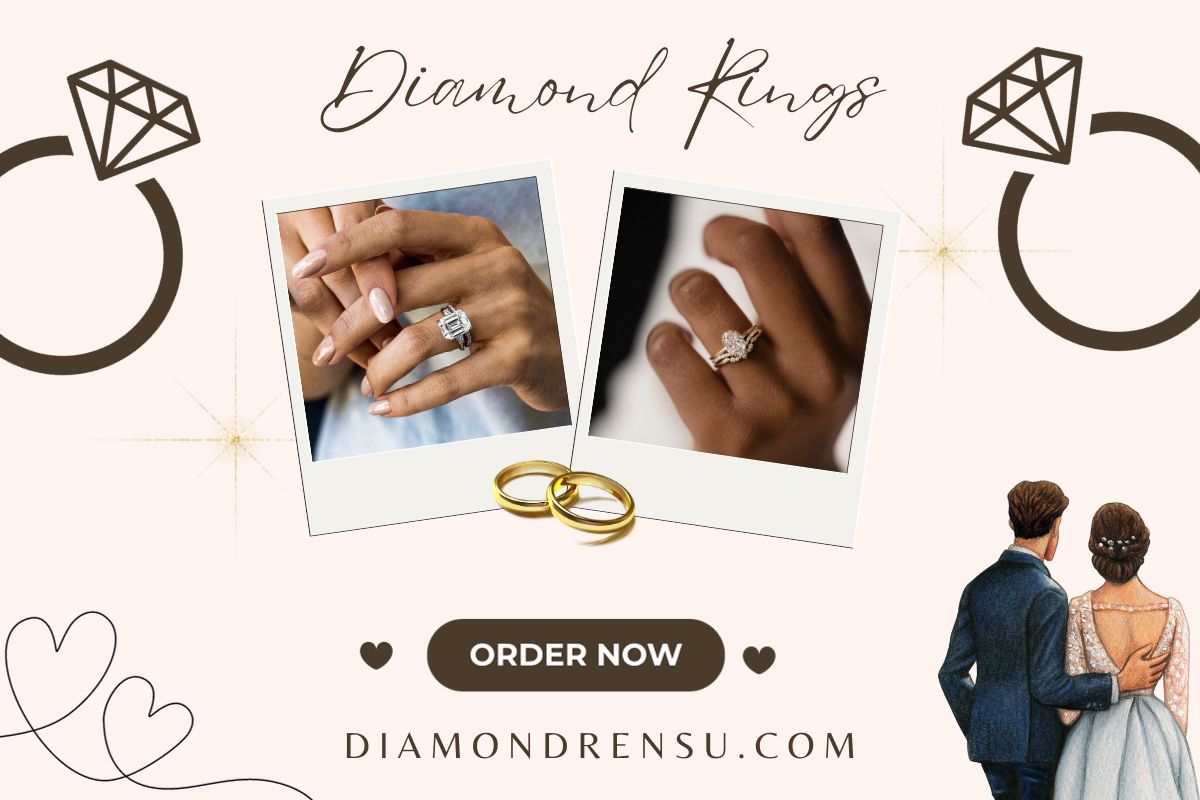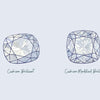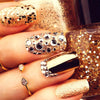
Uses for Diamonds Outside of Jewelry: Exploring Industrial and Technological Applications
Diamonds, often eclipsed by their allure and association with luxury jewelry, possess remarkable properties that make them invaluable for a range of industrial and technological applications. As the hardest naturally occurring material on Earth—ranking a 10 on the Mohs Hardness Scale—diamonds exhibit exceptional durability and cutting abilities. This has led to their widespread use in tasks that require precision and robustness, such as cutting, grinding, and polishing various materials.
Beyond their physical strength, diamonds have unique optical and thermal properties. Their ability to disperse light and resist heat makes them useful in several high-technology applications. This includes specialized equipment like heat sinks in electronics, where diamonds effectively dissipate heat to prevent devices from overheating. Additionally, their optical qualities are harnessed in lasers and high-powered microscopes for advanced scientific research, reflecting their versatility far beyond the facets of adornment.
Physical and Chemical Properties
When discussing non-jewelry uses for diamonds, it's crucial to understand their relevant physical and chemical properties. These attributes make them invaluable in various industrial applications beyond mere ornamentation.
Hardness and Abrasion Resistance
One of my most notable physical characteristics is hardness. I am the hardest known natural material on Earth, which is quantitatively expressed with a rating of 10 on the Mohs scale of mineral hardness. My extreme hardness and abrasion resistance make me particularly useful for cutting, drilling, and grinding applications.

Thermal and Electrical Conductivity
I exhibit remarkable thermal conductivity, far surpassing that of copper. This property, coupled with my electrical resistivity, allows my use as heat sinks in electronics where rapid heat dispersion is critical. Additionally, my capacity to withstand high temperatures makes me ideal for use in demanding industrial processes.
Optical Properties
My optical properties are equally significant. I am highly transparent to a wide range of wavelengths, including ultraviolet, visible, and infrared light. My ability to disperse light gives me widespread use in optical applications, such as in high-precision lasers and specialized lenses. My crystal structure, composed of tetrahedrally bonded carbon atoms, contributes to my clarity and robustness in these settings.
Industrial Uses
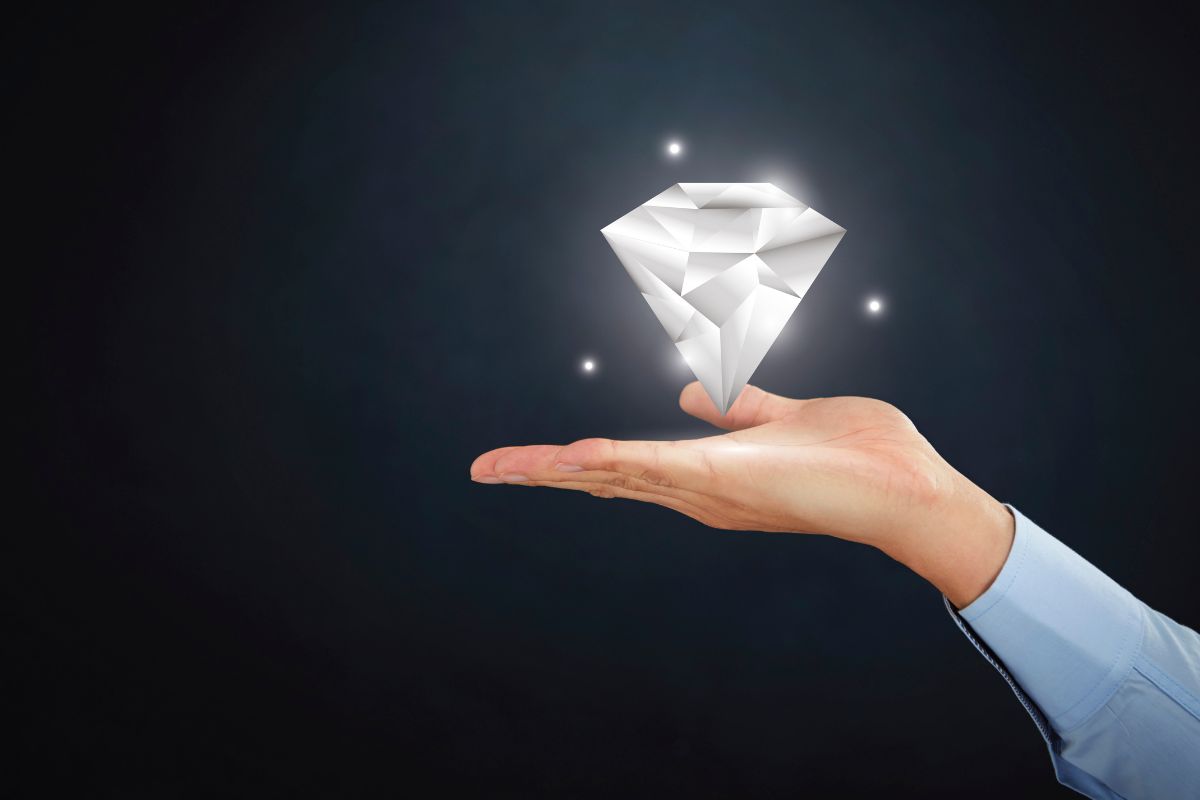
| Application | Description |
|---|---|
| Cutting and Grinding Tools | Diamonds are used as cutting and grinding tools due to their extreme hardness, making them ideal for precision cutting in industries such as mining, construction, and machining. |
| Abrasive Coatings | Diamonds are coated onto various surfaces to create abrasive coatings for polishing and finishing materials like glass, ceramics, and metals. |
| Heat Sinks | Diamonds are used as heat sinks in electronic devices to dissipate heat efficiently, ensuring optimal performance and preventing overheating. |
| Medical Tools | Diamond-coated tools are employed in medical procedures such as surgery and dentistry for their precision and durability. |
| Cutting Semiconductor Materials | Diamonds are utilized to cut and shape semiconductor materials like silicon and sapphire in electronics manufacturing. |
Diamonds play a pivotal role in various industrial applications due to their hardness and thermal conductivity. I will outline how these qualities make diamonds essential in several industries.

Cutting, Drilling, and Machining
In industries where precision and durability are crucial, I use diamonds for cutting tools, drill bits, and saws. This is because diamonds maintain their edge longer than other materials, ensuring continuous precision without frequent replacement. For example:
- Cutting: My diamond-edged tools efficiently cut through hard materials like granite and quartz.
- Drilling: Diamond drill bits are indispensable for creating precise holes in hard surfaces in mining and construction.
- Machining: In machining processes that require high precision, I opt for diamond-coated tools to shape metal and engineering composites.
Heat Sinks and Semiconductor Devices
The superior thermal conductivity of diamonds makes them ideal for use as heat sinks in semiconductor devices. Here's how I apply this property:
- Heat Dissipation: In electronics, my diamond-based heat sinks effectively draw heat away from sensitive components, preventing overheating.
- Semiconductors: I utilize diamond substrates to facilitate faster, more efficient semiconductors that can operate at higher voltages and temperatures.
High-Pressure Environments
Diamond’s resilience under high pressure allows me to employ them in devices like the diamond anvil cell, which can recreate extreme pressures in a controlled laboratory setting. This ability is essential for:
- Material Science: I use the diamond anvil cell to study material behavior at pressures found deep inside the Earth, leading to new insights in physics and chemistry.
Abrasives and Polishing
Diamond abrasives are unrivaled for their ability to grind and polish a wide variety of materials. When dealing with surfaces that require a high degree of smoothness.
| Material | Application |
|---|---|
| Metals (e.g., steel, aluminum) | Diamond abrasives are used for precision grinding and polishing of metal surfaces in industries such as automotive, aerospace, and manufacturing. |
| Ceramics | Diamonds can grind and polish ceramic materials, including tiles, pottery, and advanced ceramics used in electronics and engineering. |
| Glass | Diamond abrasives are ideal for shaping and finishing glass surfaces, commonly used in the production of mirrors, windows, and lenses. |
| Stone (e.g., granite, marble) | Diamonds are employed to grind and polish natural and engineered stone surfaces, enhancing their appearance and durability in construction and sculpture. |
| Concrete | Diamond abrasives are used for grinding and polishing concrete floors and surfaces in architectural, industrial, and decorative applications. |
I use diamond in the following ways:
- Grinding: I rely on diamond grinding wheels to shape hard materials with precision and maintain surface integrity.
- Polishing: For achieving a mirror-like finish on surfaces, my diamond polishing compounds provide the finest level of abrasiveness needed for such a task.
Healthcare and Medicine

Diamonds offer remarkable biocompatibility and durability, making them valuable in various medical applications ranging from implants to drug delivery systems.
Medical Implants and Devices
My research indicates that due to their compatibility with the human body, diamonds are increasingly being used for medical implants and devices. For example, their inert nature ensures that there are minimal risks of rejection or infection. Specifically, diamond coatings on implants, such as orthopedic joints and eye implants, have been investigated to enhance their performance and longevity. Hospitals are considering the potential for diamond-coated bionic eyes, which could offer improved health outcomes for patients.
Dentistry and Surgery Tools
In dentistry, I've found that diamonds provide precision and durability, which are crucial characteristics for dental tools and equipment. The hardness of diamonds allows for finer, sharper, and more sterile surgical tools that can be used by surgeons and dentists. Tools like drill bits and blades are commonly embedded with fine diamond particles to improve their cutting ability and extend their usable life.
Cancer Treatment and Drug Delivery
Diamond particles show promise for the targeted delivery of cancer drugs, where their size and surface properties can be finely tuned. I've learned that these properties may potentially allow diamonds to carry therapeutic agents directly to cancer cells, minimizing damage to healthy tissues. Additionally, diamonds can serve as markers under imaging for more precise delivery of drugs, positioning them as a valuable asset in contemporary cancer therapy methods.
Technology and Computing
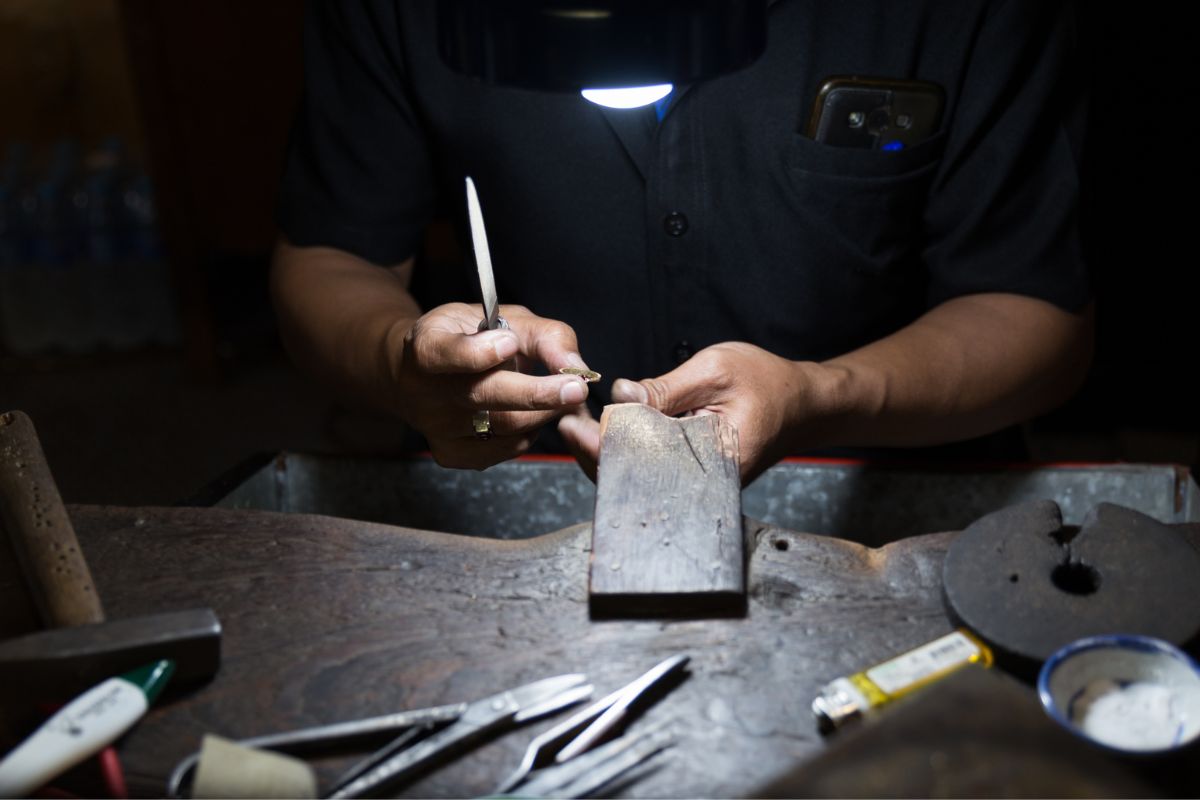
Diamonds are not just dazzling gemstones; they are taking center stage in advancing technology and computing. Their unique properties make them ideal for various applications, from enhancing telecommunications to cutting-edge quantum computing.
Telecommunications and Electronics
In my observations, diamonds have shaped the future of telecommunications and electronics significantly. Electronic devices often need materials that can dissipate heat quickly, and diamond is an excellent thermal conductor. For instance, diamond windows are utilized for their heat-resistant properties and their ability to allow a wide range of wavelengths to pass through unimpeded, which makes them perfect for use in lasers and high-powered transistors.
- Thermal Conductivity: Diamond's high thermal conductivity compared to copper makes it ideal for heat dissipation in electronic applications.
- Transistors and Diodes: Due to their ability to withstand high temperatures and electrical stresses, diamonds are used in transistors and diodes.
Computing and Quantum Computing
When it comes to computing, the hardness and high thermal conductivity of diamonds allow them to be used in more durable and efficient computer components. Diamonds are also found in quantum computing, where diamond-based components have the potential to make these computers more compact and heat-tolerant.
- Quantum Computing: Diamonds can be engineered with atomic-sized defects to create quantum bits or qubits, the basic units of quantum information.
Audio Technology
My research confirms that the audio industry, particularly where high-quality sound is paramount, benefits from diamond technology. Audiences are not the only beneficiaries; audiophiles also applaud the use of diamonds in record needles for their exceptional ability to track grooves in vinyl records accurately.
- Record Needles: The hardness of diamonds ensures longevity and precision in audio playback when used on record player needles.
Scientific and Research Instruments
Finally, in the realm of scientific and research instruments, diamonds are indispensable. These transparent stones are crucial to the function of high-pressure experiments, and their use in scientific instruments, such as particle accelerators, continues to expand.
- Synchrotrons: Diamonds are used in high-energy synchrotrons as they can withstand the intense environments inside particle accelerators.
By focusing on these specific applications of diamonds in technology and computing, I have shone a light on the significant, sometimes overlooked, roles these carbon allotropes play outside the jewelry box.
Cosmetics and Skincare

In the realm of cosmetics and skincare, I've observed diamonds transitioning from adornment to a functional ingredient. Their roles in exfoliation and anti-aging treatments have carved out a new niche in the beauty industry.
Exfoliation and Anti-Aging
When it comes to shedding years off the skin, diamond beauty products excel as an exfoliator. I understand that the micro-fine particles of diamonds in these products are excellent for sloughing off dead skin cells. In particular, nanodiamonds are increasingly employed by beauty companies to offer a gentle yet effective exfoliation, which can help reduce the appearance of fine lines and wrinkles. This fosters a brighter complexion with improved clarity and an enviable glow.
Beauty Products with Diamond Particles
I've learned that diamond-infused beauty products are more than just about the allure of luxury; they promote a sense of glamour while delivering benefits to the skin. These products imbue a subtle sparkle and shine to the skin, transcending beyond mere aesthetics by enhancing the delivery of other active ingredients deeper into the skin's layers. Here's a list of common types of beauty products that might incorporate diamond particles:
- Masks
- Creams
- Polishing treatments
Beauty companies have harnessed the reputation diamonds have for their physical properties, utilizing their particle size and the marketing appeal that's inherently linked to their value and desirability.
Other Specialty Applications

In addition to their renowned use in jewelry, diamonds are integral to various other fields due to their unparalleled hardness and thermal conductivity. I'll explore how these properties benefit aerospace and engineering, adorn luxury goods and collectibles, and enhance acoustic applications.
Aerospace and Engineering
- Aerospace: Precision cutting tools made from diamonds are indispensable in manufacturing parts for aircraft and spacecraft. This is due to their ability to shape and structure metal and composites materials with extreme accuracy and minimal wear.
- Engineering: The construction industry uses diamond-edged saws and drills for their robustness and longevity. Diamond-tipped tools are crucial for cutting through reinforced concrete and other sturdy materials in both construction and automotive domains.
Luxury Goods and Collectibles
- Luxury: High-end collectibles and luxury items often employ diamonds to signify value and durability. Items such as limited-edition watches and fountain pens are inlaid with diamonds to elevate their appeal and status.
- Collectibles: Apart from their use in tangible luxury products, diamonds are also a choice material for creating one-of-a-kind sculptures and art installations, highlighting their versatility beyond functional applications.
Acoustic and Sound Enhancement
- Enhancement: The capacity of diamonds to endure high temperatures and pressures makes them suitable for enhancing the performance of high-power lasers and even solar panels. Their thermal properties allow for efficient heat dispersion, crucial for maintaining the integrity of such devices.
- Acoustic Applications: In niche areas such as high-quality speakers, diamond tweeters are employed for their ability to vibrate at high speeds without warping, delivering an exceptionally clear and crisp sound quality. This application takes advantage of their acoustic properties, benefiting industries focused on sound precision.
I've delved into the less-known uses of diamonds that harness their exceptional physical and aesthetic qualities in sectors that demand precision, longevity, and luxury.
Environmental and Geoscience Studies

In environmental and geoscience studies, I explore the role of diamonds beyond mere adornments. Diamonds, owing to their extraordinary properties and their formation deep within the Earth's mantle, serve as invaluable tools.
Geological Insights: Diamonds provide a rich source of information about the deep Earth. The conditions required for diamond formation—a depth of 70 to 120 miles and temperatures between 1150-1200°C—place them within the diamond stability field. By studying their inclusion, which can trap minerals present during their formation, I gain insights into Earth's composition and the processes involved in diamond creation.
Research into Deep Earth Processes:
- Volcanic Activity: Diamonds are ejected to the surface typically by volcanic eruptions. Thus, examining them informs our understanding of volcanic processes.
- Mineral Indicators: Encased within diamonds are minerals that hint at the conditions and materials present deep within the Earth.
Planetary Research: Beyond Earth, diamonds offer a window into the processes that govern planetary bodies. The study of extraterrestrial diamonds can reveal similarities and differences in geological activities across the cosmos.
Diamonds and Mining Environmental Impact: As a researcher, I also assess the environmental consequences of diamond mining. Sustainable practices and the move towards lab-grown diamonds are shifting the landscape, reducing the impact of mining on the Earth's ecology.
By combining my knowledge with scientific findings, I strive to unravel the complexities of our planet and contribute to a more sustainable future in both environmental and geoscience fields.
Cultural and Symbolic Significance
Diamonds have long been treasured not only for their beauty and rarity but also for their cultural and symbolic resonance throughout history. These precious stones have transcended their material value to become icons of love, power, and artistic expression.
Diamonds in Art and History
In my examination of diamonds, I find that their presence in art and history often reflects a society’s values and its pinnacle of luxury. They frequently appear in royal regalia and famed art pieces, symbolizing both the wealth of a nation and its leaders' status. Historically, diamonds have adorned crowns and scepters, cementing a visual connection between diamonds and authority. Their rarity and the skill required to craft diamond jewelry has historically preserved diamonds as a luxury for the elite, further enriching cultural heritage.
Symbolism in Relationships and Love
Diamonds, particularly within the context of engagement rings, have come to represent enduring love and commitment. The choice of a diamond engagement ring can be seen as an expression of depth and permanence, paralleling the characteristics of the stone itself. This symbolism is deeply ingrained in many societies, positioning diamonds as the ultimate declaration of romantic intent. The connection between diamonds and love is not a recent phenomenon; their use in betrothal rings can be traced back to the Renaissance, with their clear and unbreakable nature mirroring the desired qualities of a lasting relationship.
Frequently Asked Questions
Diamonds have a wide range of uses beyond adornment, thanks to their unrivaled hardness and thermal properties. I'll address some common questions to shed light on their versatile applications.
How are diamonds utilized in industrial applications?
In industry, diamonds are primarily used for their strength and durability. They are incorporated into cutting, drilling, and grinding equipment, processing a variety of materials due to their topmost ranking on the Mohs Hardness Scale.
What is the role of diamonds in modern medicine?
Diamonds play a role in modern medicine by making precision cutting possible in surgical instruments. They can be found in scalpels as well as in laser equipment, where they improve the accuracy of treatments and surgeries.
Can diamonds be used in technology, and if so, in what capacity?
Absolutely, diamonds are integral to technological advancements. They serve as excellent heat conductors in semiconductors and can be found in high-quality sound systems as diamond dome tweeters, improving sound quality due to their rigid, yet lightweight, properties.
What are the scientific research applications for diamonds?
In the realm of scientific research, diamonds are used for their ability to withstand extreme pressures and temperatures. They function as anvils in high-pressure experiments and help in the manufacture of strong lenses used in high-powered laser research.
How do diamonds contribute to the work in the field of electronics?
Diamonds have exceptional thermal conductivity and electric insulating properties, making them beneficial in electronic devices. They are used in transistors, high-performance microprocessors, and in areas requiring durable insulating materials.
What are some alternative materials that can perform similar functions to diamonds in various usages?
While diamonds are unique in their properties, materials like cubic boron nitride and synthetic moissanite serve as alternatives for cutting and abrasives. Silicon carbide is also used as a substitute in certain electronic applications due to its thermal and electrical characteristics.
Checkout some of our top collections:
- Moissanite Engagement Rings
- Moissanite Earrings
- Moissanite Bracelets
- Moissanite Solitaire Engagement Rings
- Moissanite Mens Engagement Rings
- Moissanite Princess Cut Stones
- Lab Grown Engagement Rings
- Lab Grown Diamond Earrings
- Lab Grown Diamond Wedding Bands
Leave a comment
Please note, comments must be approved before they are published.
